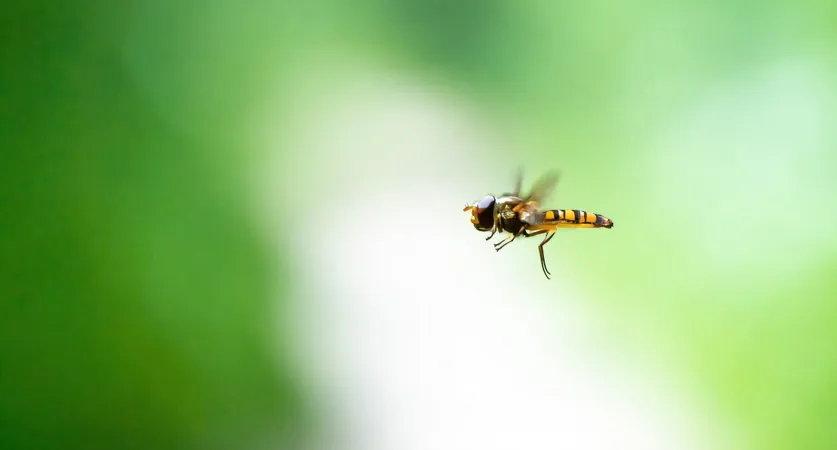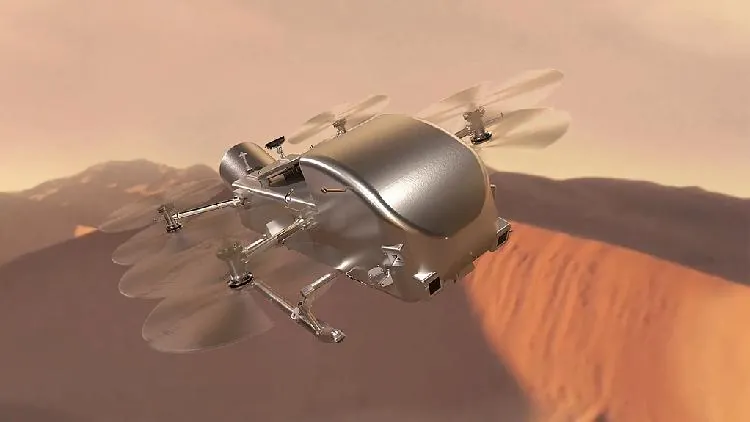
The Fascinating Journey of Marmalade Hoverflies: A Marathon Migration Explained!
2024-11-29
Author: Liam
Introduction
Recent studies published in iScience have unveiled intriguing insights into the migration patterns of hoverflies, specifically the marmalade hoverflies, revealing how these small insects journey further than their stationary counterparts—but without increasing their speed.
Research Study
In groundbreaking research, scientists captured migrating marmalade hoverflies in the stunning Pyrenees mountains and compared them to their non-migratory counterparts found in the U.K. Each hoverfly was subjected to a unique "tether" test that allowed them to fly while being securely bound, demonstrating that migratory hoverflies can fly up to twice the distance of those that do not migrate.
Influence of Fat Reserves
The study also highlighted a compelling aspect of hoverfly biology: the influence of fat reserves. Those with plumper abdomens, indicating they are well-nourished, managed to travel five times further than their leaner peers. Interestingly, while body condition boosted travel distances, both migratory and non-migratory hoverflies maintained a consistent flight speed, with larger individuals generally flying faster than their smaller counterparts.
Comments from Experts
Richard Massy from Exeter's Center for Ecology and Conservation remarked, "Typically, migrating animals like birds speed up their movements. Our findings that marmalade hoverflies do not exhibit this behavior challenge previous assumptions." He emphasized that for these insects, "migration is a marathon—not a sprint," suggesting that they may consciously regulate their speed to conserve energy during long migrations, thus avoiding muscle fatigue.
Behavioral Differences
Marmalade hoverflies thrive across Europe and exhibit notable behavioral differences based on geographical location and seasonal changes. Hoverflies that mature in the summer live for a short span, just a few weeks to a month, reproducing multiple times throughout the season. However, those maturing in autumn postpone their breeding, enhancing their longevity and facilitating migration to southern regions.
Impact of Habitat Loss
This research underscores the critical relationship between hoverflies’ body condition and their access to food sources like flowers during migration. Dr. Karl Wotton highlighted an alarming trend: "If habitats are lost or if flower availability does not align with migratory patterns, it can severely hinder successful migrations." This mismatch could shed light on the recent decline in hoverfly populations seen across various regions.
Ecological Significance
Dr. Will Hawkes elaborated on the ecological significance of marmalade hoverflies, stating, "These vibrant insects are not only a common sight in U.K. gardens but play a crucial role as pollinators and as a natural pest control, particularly against aphids, thus protecting crops from damage."
Migration Distance
Despite their diminutive size of just 1cm, these hoverflies are formidable travelers, with some suspected to migrate over 1,000 kilometers in search of suitable habitats. The migrating individuals in the study were captured at the Puerto de Bucharuelo mountain pass, situated on the picturesque border of France and Spain, while their non-migrating counterparts were found at the Penryn Campus in Cornwall.
Conclusion
As we unravel the mysteries behind the migration strategies of these incredible insects, we are reminded of the delicate balance of their ecological roles and the potential threats they face due to environmental changes. The world needs to pay attention: the fate of hoverflies could reflect broader ecological health, and understanding their journey is essential for conservation efforts.









 Brasil (PT)
Brasil (PT)
 Canada (EN)
Canada (EN)
 Chile (ES)
Chile (ES)
 España (ES)
España (ES)
 France (FR)
France (FR)
 Hong Kong (EN)
Hong Kong (EN)
 Italia (IT)
Italia (IT)
 日本 (JA)
日本 (JA)
 Magyarország (HU)
Magyarország (HU)
 Norge (NO)
Norge (NO)
 Polska (PL)
Polska (PL)
 Schweiz (DE)
Schweiz (DE)
 Singapore (EN)
Singapore (EN)
 Sverige (SV)
Sverige (SV)
 Suomi (FI)
Suomi (FI)
 Türkiye (TR)
Türkiye (TR)